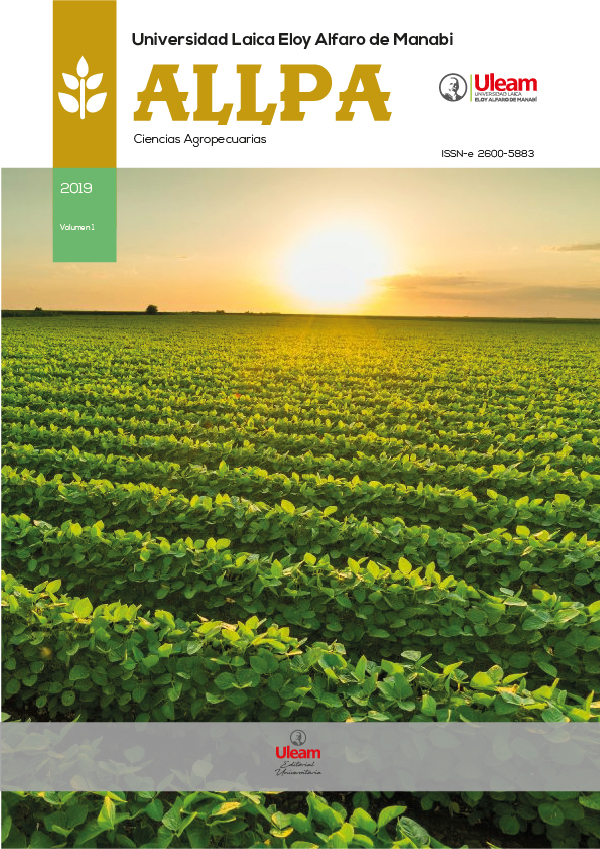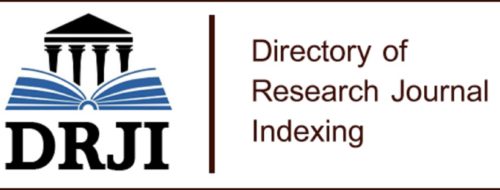Ecografía Doppler en bovinos: utilidad clínica para resincronización temprana frente a otras técnicas de imagenología
DOI:
https://doi.org/10.56124/allpa.v8i16.0127Palabras clave:
Ecografía Doppler, reproducción bovina, cuerpo lúteo, flujo sanguíneo, resincronización tempranaResumen
La baja eficiencia reproductiva en bovinos representa un desafío económico importante, ya que incrementa los días abiertos, reduce la productividad y afecta la rentabilidad de los sistemas de carne y leche. En este contexto, la ecografía Doppler ha surgido como una herramienta innovadora para evaluar la fisiología reproductiva, especialmente en la detección temprana de hembras no preñadas y la optimización de programas de resincronización. Esta revisión sistemática, desarrollada bajo la metodología PRISMA, analizó 30 estudios publicados entre 2015 y 2024 en bases de datos de alto impacto. Los hallazgos muestran que la perfusión intra-luteal medida con Doppler (área en cm² o porcentaje vascularizado) constituye el indicador más sensible y precoz de funcionalidad del cuerpo lúteo, superando a métricas indirectas como los índices espectrales arteriales (IR y PI) o las mediciones morfológicas por modo B. Se establecieron umbrales prácticos (≥0,52 cm² en D7; ≥0,77 cm² en D14; >0,55 cm² o >15,68% en D16; ≥51% en D20–22) que permiten descartar no-preñez y resincronizar oportunamente, reduciendo pérdidas reproductivas. En comparación con otras técnicas, el Doppler aporta información funcional complementaria a la morfología, consolidándose como apoyo clínico para mejorar la toma de decisiones en la gestión reproductiva bovina.
Palabras clave: Ecografía Doppler, reproducción bovina, cuerpo lúteo, flujo sanguíneo, resincronización temprana.
Abstract
Low reproductive efficiency in cattle represents a significant economic challenge, as it increases the number of days open, reduces productivity, and affects the profitability of beef and dairy systems. In this context, Doppler ultrasound has emerged as an innovative tool for assessing reproductive physiology, particularly in the early detection of non-pregnant females and the optimization of resynchronization programs. This systematic review, developed using the PRISMA methodology, analyzed 30 studies published between 2015 and 2024 in high-impact databases. The findings show that intraluteal perfusion measured with Doppler (area in cm² or percentage vascularized) is the most sensitive and early indicator of corpus luteum function, surpassing indirect metrics such as arterial spectral indices (RI and PI) or B-mode morphological measurements. Practical thresholds were established (≥0.52 cm² on D7; ≥0.77 cm² on D14; >0.55 cm² or >15.68% on D16; ≥51% on D20–22) that allow non-pregnancy to be ruled out and timely resynchronization to be performed, reducing reproductive losses. Compared with other techniques, Doppler provides functional information complementary to morphology, establishing itself as a clinical aid to improve decision-making in bovine reproductive management.
Keywords: Doppler ultrasound, bovine reproduction, corpus luteum, blood flow, early resynchronization.
Fecha de recepción: 09 de abril de 2025; Fecha de aceptación: 18 de junio de 2025; Fecha de publicación: 09 de julio del 2025.
Descargas
Citas
Abdelnaby, E. A., Abo El-Maaty, A. M., & El-Badry, D. A. (2020). Ovarian and uterine arteries blood flow waveform response in the first two cycles following superstimulation in cows. Reproduction in Domestic Animals, 55(1), 42-50. https://doi.org/10.1111/rda.13668
Andrade, J. P. N., Andrade, F. S., Guerson, Y. B., Domingues, R. R., Gomez-León, V. E., Cunha, T. O., Jacob, J. C. F., Sales, J. N. S., Martins, J. P. N., & Mello, M. R. B. (2019). Early pregnancy diagnosis at 21 days post artificial insemination using corpus luteum vascular perfusion compared to corpus luteum diameter and/or echogenicity in Nelore heifers. Animal Reproduction Science, 209, 106144. https://doi.org/10.1016/j.anireprosci.2019.106144
Bollwein, H., Heppelmann, M., & Lüttgenau, J. (2016). Ultrasonographic Doppler use for female reproduction management. Veterinary Clinics of North America: Food Animal Practice, 32(1), 149-164. https://doi.org/10.1016/j.cvfa.2015.09.005
Bonato DV, Ferreira EB, Gomes DN, Bonato FGC, Droher RG, Morotti F, Seneda MM. 2022. Follicular dynamics, luteal characteristics, and progesterone concentrations in synchronized lactating Holstein cows with high and low antral follicle counts. Theriogenology. 179, 223-229. https://doi.org/10.1016/j.theriogenology.2021.12.006
Chebel, R. C., & Ribeiro, E. S. (2016). Reproductive Systems for North American Dairy Cattle Herds. Vet Clin Food Anim, 32, 267-284. DOI: https://dx.doi.org/10.1016/j.cvfa.2016.01.002
Díaz, P. U., Belotti, E. M., Salvetti, N. R., Leiva, C. J. M., Durante, L. I., Marella, B. E., Stangaferro, M. L., & Ortega, H. H. (2019). Hemodynamic changes detected by Doppler ultrasonography in bovine ovaries during early development of cystic ovarian disease. Animal Reproduction Science, 209, 106164. https://doi.org/10.1016/j.anireprosci.2019.106164
Domingues, R. R., & Ginther, O. J. (2018). Angiocoupling between the dominant follicle and corpus luteum during waves 1 and 2 in Bos taurus heifers. Theriogenology, 114, 230–239. https://doi.org/10.1016/j.theriogenology.2018.03.019
Dubuc, J., Fauteux, V., Roy, J.-P., Denis-Robichaud, J., Rousseau, M., & Buczinski, S. (2021). Randomized controlled trial of reinsemination strategies in dairy cows diagnosed nonpregnant using color flow Doppler ultrasonography on d 21 after insemination. JDS Communications, 2(6), 381–386. https://doi.org/10.3168/jdsc.2021-0149
Felipez, M. V., Acosta, T., & Ungerfeld, R. (2019). Sexual stimulation as a luteolytic inductor in beef heifers. Theriogenology, 132, 83–87. https://doi.org/10.1016/j.theriogenology.2019.04.003
Ginther, O. J. (2014). How ultrasound technologies have expanded and revolutionized research in reproduction in large animals. Theriogenology, 81(1), 112-125. https://doi.org/10.1016/j.theriogenology.2013.09.007
Ginther, O. J., Siddiqui, M. A. R., & Baldrighi, J. M. (2016). Functional angiocoupling between follicles and adjacent corpus luteum in heifers. Theriogenology, 85(5), 938-948. https://doi.org/10.1016/j.theriogenology.2016.03.002
Guimarães, C. R. B., Santos, G. M. G., Guimarães, S. E. F., & Viana, J. H. M. (2015). Corpus luteum blood flow evaluation on Day 21 to improve the management of embryo recipient herds. Theriogenology, 84(2), 237–244. https://doi.org/10.1016/j.theriogenology.2015.03.005
Hassan, M., Arshad, U., Bilal, M., Sattar, A., Avais, M., Bollwein, H., & Ahmad, N. (2019). Luteal blood flow measured by Doppler ultrasonography during the first three weeks after artificial insemination in pregnant and non-pregnant Bos indicus dairy cows. Journal of Reproduction and Development, 65(1), 29–36. https://doi.org/10.1262/jrd.2018-110
Hernandez-Medrano, J. H., Copping, K. J., Hoare, A., Wapanaar, W., Grivell, R., Kuchel, T., Miguel-Pacheco, G., McMillen, I. C., Rodgers, R. J., & Perry, V. E. A. (2015). Gestational dietary protein is associated with sex-specific decrease in blood flow, fetal heart growth and post-natal blood pressure of progeny. PLOS ONE, 10(4), e0125694. https://doi.org/10.1371/journal.pone.0125694
Holton, M. P., de Melo, G. D., Dias, N. W., Pancini, S., Lamb, G. C., Pohler, K. G., Mercadante, V. R. G., Harvey, K. M., & Fontes, P. L. P. (2022). Evaluating the use of luteal color Doppler ultrasonography and pregnancy-associated glycoproteins to diagnose pregnancy and predict pregnancy loss in Bos taurus beef replacement heifers. Journal of Animal Science, 100(12). https://doi.org/10.1093/jas/skac335
Jitjumnong, J., Moonmanee, T., Sudwan, P., Mektrirate, R., Osathanunkul, M., Navanukraw, C., Panatuk, J., Yama, P., Pirokad, W., U-krit, W., & Chaikol, W. (2020). Associations among thermal biology, preovulatory follicle diameter, follicular and luteal vascularities, and sex steroid hormone concentrations during preovulatory and postovulatory periods in tropical beef cows. Animal Reproduction Science, 213, 106281. https://doi.org/10.1016/j.anireprosci.2020.106281
Kanazawa, T., Seki, M., Ishiyama, K., Araseki, M., Izaike, Y., & Takahashi, T. (2017). Administration of gonadotropin-releasing hormone agonist on Day 5 increases luteal blood flow and improves pregnancy prediction accuracy on Day 14 in recipient Holstein cows. Journal of Reproduction and Development, 63(4), 389–399. https://doi.org/10.1262/jrd.2016-128
Kanazawa, T., Seki, M., Ishiyama, K., Kubo, T., Kaneda, Y., Sakaguchi, M., Izaike, Y., & Takahashi, T. (2016). Pregnancy prediction on the day of embryo transfer (Day 7) and Day 14 by measuring luteal blood flow in dairy cows. Theriogenology, 86(3), 545–553. https://doi.org/10.1016/j.theriogenology.2016.05.001
Kelley, D. E., Galvão, K. N., Mortensen, C. J., Risco, C. A., & Ealy, A. D. (2017). Using Doppler ultrasonography on day 34 of pregnancy to predict pregnancy loss in lactating dairy cattle. Journal of Dairy Science, 100(4), 3240-3250. https://doi.org/10.3168/jds.2016-11955
Kraisoon, A., Navanukraw, C., Inthamonee, W., & Bunma, T. (2018). Embryonic development, luteal size and blood flow area, and concentrations of PGF2α metabolite in dairy cows fed a diet enriched in polysaturated or polyunsaturated fatty acid. Animal Reproduction Science, 197, 24–34. https://doi.org/10.1016/j.anireprosci.2018.06.007
López-Gatius, F., Garcia-Ispierto, I., Serrano-Pérez, B., Balogh, O. G., Gábor, G., & Hunter, R. H. F. (2019). Luteal activity following follicular drainage of subordinate follicles for twin pregnancy prevention in bi-ovular dairy cows. Research in Veterinary Science, 125, 169-175. https://doi.org/10.1016/j.rvsc.2019.05.006
Owen, M. P. T., McCarty, K. J., Hart, C. G., Steadman, C. S., & Lemley, C. O. (2018). Endometrial blood perfusion as assessed using a novel laser Doppler technique in Angus cows. Animal Reproduction Science, 190, 119–126. https://doi.org/10.1016/j.anireprosci.2018.01.015
Page, M. J., McKenzie, J. E., Bossuyt, P. M., Boutron, I., Hoffmann, T. C., Mulrow, C. D., Shamseer, L., Tetzlaff, J. M., Akl, E. A., Brennan, S. E., Chou, R., Glanville, J., Grimshaw, J. M., Hróbjartsson, A., Lalu, M. M., Li, T., Loder, E. W., Mayo-Wilson, E., McDonald, S., McGuinness, L. A., Stewart, L. A., Thomas, J., Tricco, A. C., Welch, V. A., Whiting, P., & Moher, D. (2021). The PRISMA 2020 statement: an updated guideline for reporting systematic reviews. Systematic Reviews, 10(1), 89. https://doi.org/10.1186/s13643-021-01626-4
Palhão, M. P., Ribeiro, A. C., Martins, A. B., Guimarães, C. R. B., Alvarez, R. D., Seber, M. F., Fernandes, C. A. C., Neves, J. P., & Viana, J. H. M. (2020). Early resynchronization of non-pregnant beef cows based on corpus luteum blood flow evaluation 21 days after timed-AI. Theriogenology, 148, 137-143. https://doi.org/10.1016/j.theriogenology.2020.01.064
Pinaffi, F. L. V., Silva, L. A., Monteiro, F. M., Sousa, A. L., Nogueira, G. P., & Binelli, M. (2015). Follicle and corpus luteum size and vascularity as predictors of fertility at the time of artificial insemination and embryo transfer in beef cattle. Pesquisa Veterinária Brasileira, 35(5), 438–446. https://doi.org/10.1590/S0100-736X2015000500015
Pugliesi, G., de Melo, G. D., Ataíde Jr, G. A., Pellegrino, C. A. G., Silva, J. B., Rocha, C. C., Motta, I. G., Vasconcelos, J. L. M., & Binelli, M. (2018). Use of Doppler ultrasonography in embryo transfer programs: Feasibility and field results. Animal Reproduction, 15(3), 239–246. https://doi.org/10.21451/1984-3143-AR2018-0059
Rawy, M., Mido, S., El-sheikh Ali, H., Derar, R., Megahed, G., Kitahara, G., & Osawa, T. (2018). Effect of exogenous estradiol benzoate on uterine blood flow in postpartum dairy cows. Animal Reproduction Science. https://doi.org/10.1016/j.anireprosci.2018.03.001
Satheshkumar, S., Manimaran, A., Kumaresan, A., Ansari, M. R., & Rajendran, R. (2018). Periovulatory perifollicular blood flow and its relationship with subsequent ovulation in Bos indicus cows. Animal Reproduction Science, 198, 118–125. https://doi.org/10.1016/j.anireprosci.2018.09.014
Silva de, C. E., Ribeiro, A. R. B., Silva, L. A., & Wiltbank, M. C. (2024). Early pregnancy diagnosis in cows using corpus luteum blood flow analysis based on colour Doppler ultrasonography and mRNA analysis. BMC Veterinary Research, 20(1), 4438. https://doi.org/10.1186/s12917-024-04438-5
Siqueira, L. G. B., Arashiro, E. K., Ghetti, A. M., Souza, E. D., Feres, L. F., Pfeifer, L. F., Fonseca, J. F., & Viana, J. H. M. (2019). Vascular and morphological features of the corpus luteum 12 to 20 days after timed artificial insemination in dairy cattle. Journal of Dairy Science, 102(6), 5612–5622. https://doi.org/10.3168/jds.2018-15853
Speckhart, S. L., Reese, S. T., Franco, G. A., Ault, T. B., Oliveira Filho, R. V., Oliveira, A. P., & Pohler, K. G. (2018). Invited Review: Detection and management of pregnancy loss in the cow herd. The Professional Animal Scientist , 34(6), 544-557. https://doi.org/10.15232/pas.2018-01772
Torres Aburto, V. F., Severino Lendechy, V. H., López Reyes, L. Y., Perezgrovas Garza, R. A., Espinosa Ortiz, V. E., & Peralta Torres, J. A. (2022). Evaluación económica de la eficiencia reproductiva y productiva en sistemas productivos con ganado criollo en Campeche, México. Acta Universitaria, 32, 1–15. https://doi.org/10.15174/au.2022.3501
Velho, I. M. P. H., Dallanora, S. S., Meira, E. B. S., Sá Filho, M. F., Sales, J. N. S., Crepaldi, G. A., & Baruselli, P. S. (2021). Luteal blood perfusion on day 5 after timed artificial insemination as a predictor of fertility in Nelore heifers. Reproduction in Domestic Animals, 56(9), 1171–1179. https://doi.org/10.1111/rda.14046
Yáñez, U., Becerra, J. J., Herradón, P. G., Peña, A. I., & Quintela, L. A. (2022). Ecografía Doppler y su aplicación en reproducción bovina: revisión. Información Técnica Económica Agraria, 118(1), 35-50. https://doi.org/10.12706/itea.2021.019
Yáñez, U., Murillo, A. V., Becerra, J. J., Herradón, P. G., Peña, A. I., & Quintela, L. A. (2023). Comparison between transrectal palpation, B-mode and Doppler ultrasonography to assess luteal function in Holstein cattle. Frontiers in Veterinary Science, 10, 1162589. https://doi.org/10.3389/fvets.2023.1162589
Publicado
Cómo citar
Número
Sección
Licencia
Derechos de autor 2025 Revista de Ciencias Agropecuarias ALLPA. ISSN: 2600-5883.

Esta obra está bajo una licencia internacional Creative Commons Atribución-NoComercial-CompartirIgual 4.0.


.jpg)










